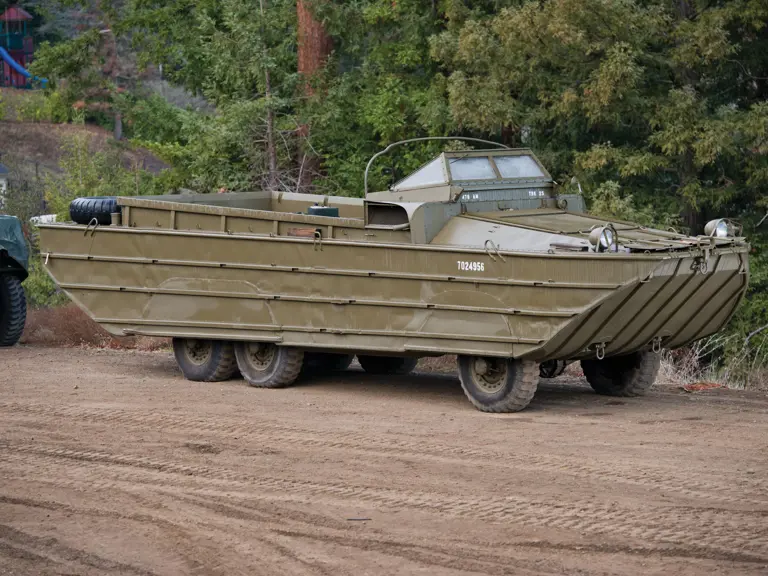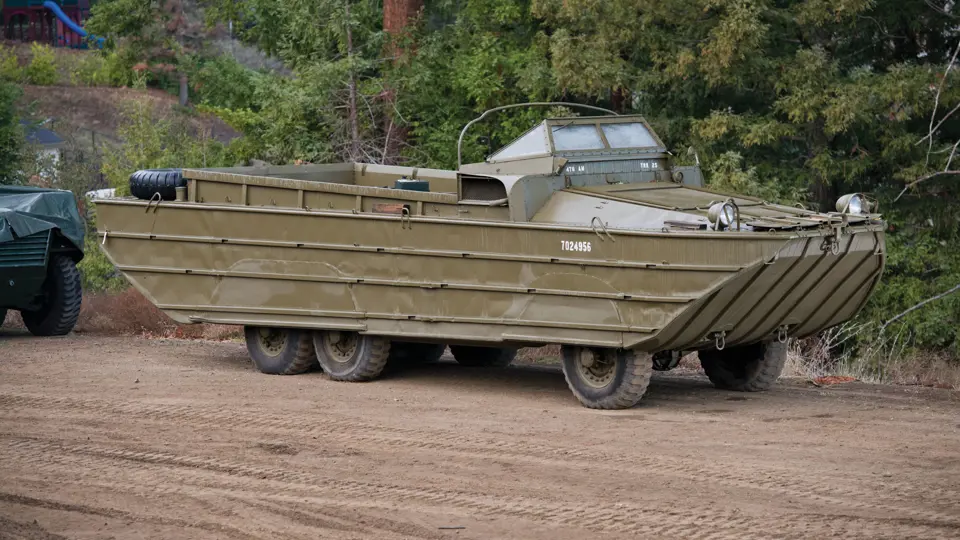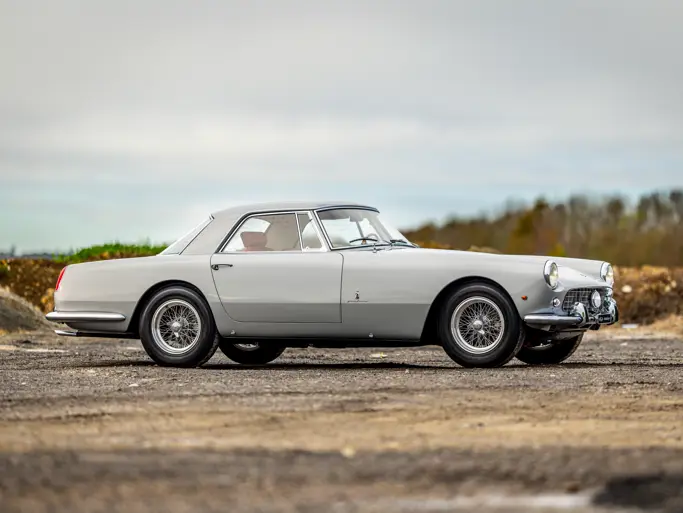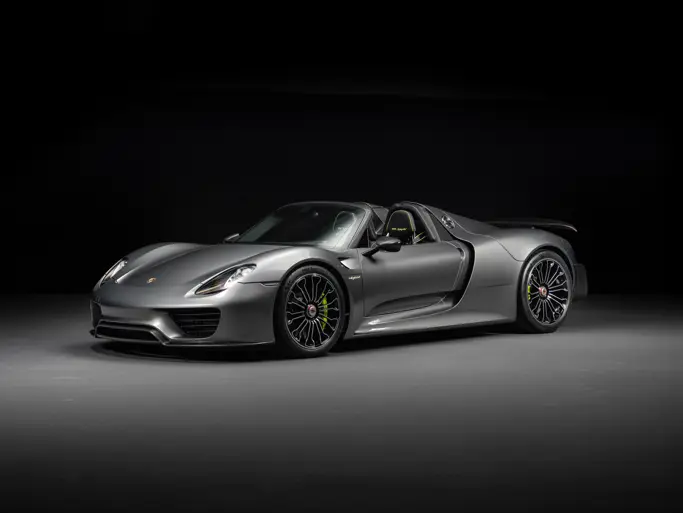 | Portola Valley, California
| Portola Valley, California
Weight: 7.4-tons (6,749-kg)
Length: 31' 0” (9.44-m)
Width: 6' 2”(1.90-m)
Height: 8' 10” (8.83-m)
Crew: 2
Armor:
None
Weapons:
None
Engine: GMC straight-six, 6-cylinder, 94-hp
Power/weight: 12.7-hp/ton
Fuel Capacity: 40-USG (151-l)
Range: 240-miles (386-km)
Speed: 50-mph (80-km/h)
The vehicle offered, DUKW Amphibious Truck, is an older restoration and is in very nice condition. The vehicle's interior plywood floors are in good condition. Winch and winch cable look good. The steering and all controls are functional. All lights appear to be in normal condition. The interior and exterior paint look quite good in spite of their age. All original rope fenders are included and are currently stowed on-board the vehicle. The vehicle runs and drives well.
The DUKW was developed to provide the army with a way to transport equipment from ships to the beach and even farther if needed. Testing of the pilot model began in June 1942. Automotively, the DUKW was based on GMC's G-508 series of trucks. DUKW is from GMC's naming terminology and stands for the following:
D- the vehicle was designed in 1942
U- utility
K- indicates front-driven wheels
W- indicates two powered rear axles
Being an amphibious vehicle, the DUKW is propelled in the water by a propeller mounted on a shaft at the rear of the vehicle. Water speed was up to 6-mph. The bilge system of the DUKW allowed it to keep afloat even if its boat hull had holes up to 2-inches in diameter punched into it. A total of 21,137 DUKW's were built during World War II.
First seeing service during the invasion of Sicily in 1943, the DUKW went on to see service in both the European and Pacific Theaters. They were exported to Great Britain, Australia and the Soviet Union. Post-war, they were utilized by the French, Canadian and Philippine armed forces. They were finally retired from U.S. service when the LARC series of amphibious vehicle was put into production during the late 1950s. Many are still in use today with private companies that use them for river and harbor tours.
Transport Cost to Storage: $660





